Virginia Creeper
- October 18, 2023
- 0 comment
Virginia Creeper, scientifically known as Parthenocissus quinquefolia, is a striking North American vine renowned for its vibrant foliage and vigorous growth. This woody climber, native to eastern and central parts of the United States, boasts deep green leaves composed of five serrated leaflets, which transform into a brilliant display of crimson, orange, or purple during the fall, making it a favorite for autumn landscapes.
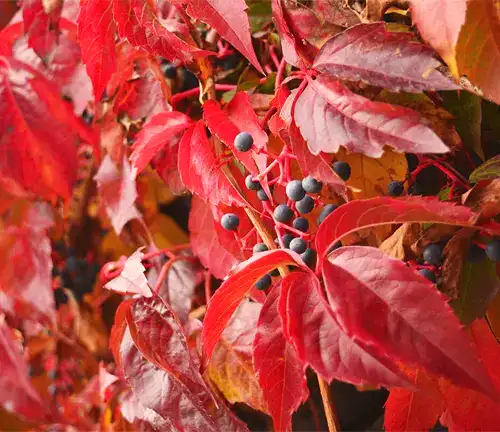
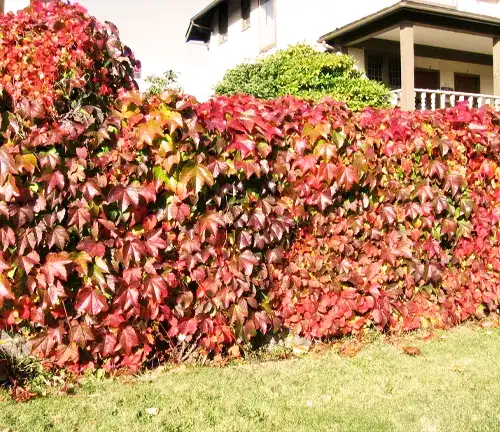
Virginia Creeper is often confused with poison ivy due to its similar leaflet structure, but it is entirely harmless to touch. This versatile vine is a popular choice for landscaping, as it can be used to cover fences, walls, or trellises, providing a lush and picturesque backdrop. It is valued not only for its aesthetic appeal but also for its ability to provide cooling shade in the summertime. In addition to its ornamental qualities, Virginia Creeper is an essential habitat and food source for various wildlife, including birds that relish its small, dark berries.
Its adaptability, striking seasonal transformations, and ecological significance make Virginia Creeper a cherished addition to gardens and natural landscapes alike.
| Characteristics | Description |
| Scientific Name | Parthenocissus quinquefolia |
| Common Name | Virginia Creeper |
| Plant Type | Woody vine |
| Native Range | Eastern and central United States |
| Foliage | Compound leaves with five serrated leaflets |
| Foliage Color | Deep green in spring and summer, turning crimson, orange, or purple in fall |
| Growth Rate | Fast |
| Mature Height | Up to 30-50 feet (9-15 meters) |
| Sunlight | Full sun to part shade |
| Soil Type | Well-draining, adaptable to various soil types |
| Tolerances | Tolerant of a wide range of soil conditions and pollution |
| Maintenance | Low maintenance once established |
| Uses | Landscaping, covering fences, walls, trellises, providing shade |
| Wildlife Value | Berries attract birds |
| Toxicity | Non-toxic to humans (unlike poison ivy) |
| Special Features | Striking autumn foliage, ecological significance |
Botanical Beauty of “Virginia Creeper”
In the realm of North American flora, Virginia Creeper, or Parthenocissus quinquefolia, stands as a testament to natural splendor. This native vine, adorned with striking foliage and an ability to climb with grace, captivates all who encounter it. The botanical beauty of Virginia Creeper lies in its compound leaves, each comprising five serrated leaflets. In spring and summer, these leaves exhibit a rich, deep green color, but it’s in the fall when this vine truly shines. The transformation is nothing short of a spectacle, with the leaves adopting brilliant hues of crimson, orange, or purple. It’s this enchanting seasonal transition that makes Virginia Creeper a cherished addition to gardens and landscapes across the United States.
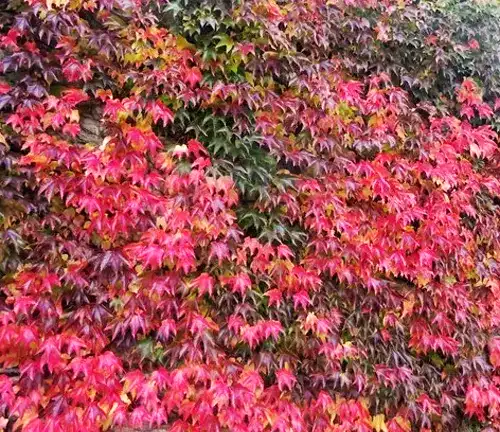
Woodland Elegance
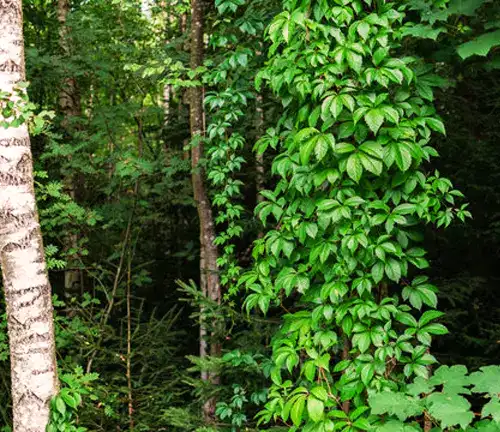
Virginia Creeper, with its climbing tendencies and foliage that gracefully drapes over structures, exudes woodland elegance. As it clambers up walls, fences, or trellises, it creates a living tapestry that adds an air of sophistication to any outdoor space. Its sprawling nature provides a picturesque backdrop for gardens, offering a touch of natural charm that complements various architectural styles. Whether it’s adorning an old farmhouse or enhancing the facade of a modern home, Virginia Creeper lends an understated but timeless elegance.
Ecological Importance
Beyond its ornamental value, Virginia Creeper plays a crucial role in the ecosystem. This vine serves as both habitat and sustenance for wildlife. Birds, in particular, are drawn to Virginia Creeper for its small, dark berries. It’s a delightful source of food, especially during the autumn months when other resources become scarce. The berries provide essential nourishment for birds, aiding in their migration and overall survival. Virginia Creeper thus contributes to the ecological balance by supporting biodiversity in our surroundings.

Cultivation and Conservation
Cultivating Virginia Creeper is relatively straightforward, making it accessible to both seasoned gardeners and novices. It’s highly adaptable to various soil types and can thrive in full sun to partial shade, making it an ideal choice for diverse landscapes. However, it’s crucial to strike a balance when planting Virginia Creeper, as its fast growth can become unruly if not properly managed. Conservation-wise, while Virginia Creeper is not currently at risk, preserving native plant species and the natural habitats where they thrive remains vital in safeguarding biodiversity.
Fragrance
Virginia Creeper offers an additional sensory delight through its fragrant blossoms. In late spring and early summer, the vine produces small clusters of inconspicuous greenish-white flowers. While not particularly showy, these blossoms emit a gentle, sweet fragrance that attracts pollinators. Bees and other insects are drawn to the nectar, facilitating pollination and contributing to the overall health of the garden ecosystem.
Soil Stabilization
Virginia Creeper also serves a practical purpose in the landscape by aiding in soil stabilization. Its vigorous growth and root system help prevent soil erosion, making it a valuable choice for sloping terrain or areas prone to erosion. By anchoring the soil, this vine contributes to the preservation of the landscape’s integrity.
Common Uses
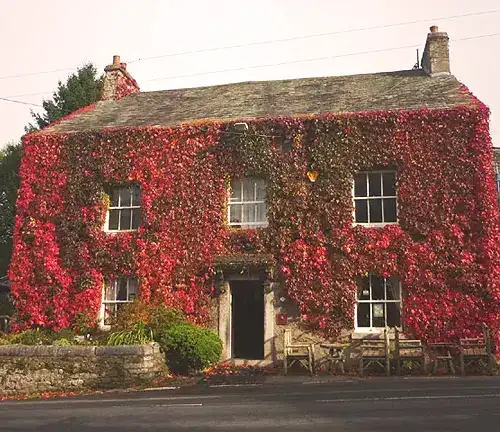
Virginia Creeper’s versatility extends beyond its aesthetic appeal and ecological significance. It’s commonly used to cover fences, walls, and trellises, providing a natural and lush screen. Homeowners often choose it for its shade-providing capabilities, making it an excellent choice for creating cool, green retreats in the summer heat.
Benefits
In summary, Virginia Creeper is a botanical gem that graces our landscapes with its alluring beauty. Its role in the ecosystem, ease of cultivation, fragrance, and practical benefits make it a valuable addition to gardens and natural spaces. Whether it’s for its visual charm, the nourishment it provides to wildlife, or its soil-stabilizing properties, Virginia Creeper stands as a testament to the wonders of native plants and their profound impact on the world around us.
Different Species
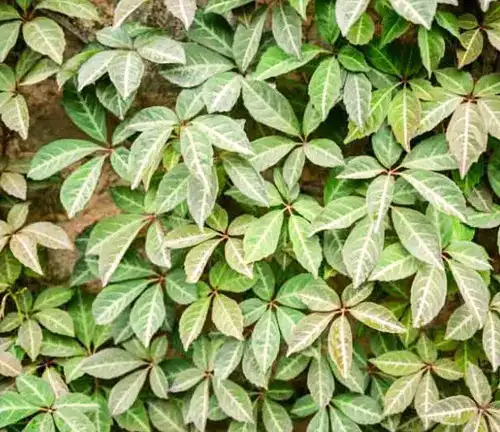
Parthenocissus henryana
(Chinese Virginia Creeper)
This species is native to China and is known for its attractive, variegated leaves that feature a mix of green and white, making it a popular ornamental vine in gardens.
Parthenocissus tricuspidata
(Boston Ivy or Japanese Creeper)
While not the same as Virginia Creeper, Boston Ivy is often confused with it. It is native to eastern Asia and is valued for its climbing habit and rich green leaves that turn vibrant shades of red in the fall.

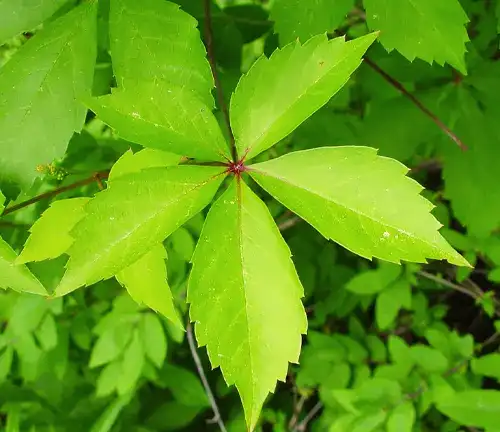
Parthenocissus inserta
(False Virginia Creeper)
This species is also sometimes confused with Virginia Creeper. It’s native to North America and shares a similar leaf structure, but its growth and habit can differ from the true Virginia Creeper.
Parthenocissus quinquefolia var. murorum
(False Virginia Creeper)
Another variety sometimes referred to as “False Virginia Creeper” or “Wall Creeper.” It is similar in appearance to true Virginia Creeper but may have some distinct growth characteristics.
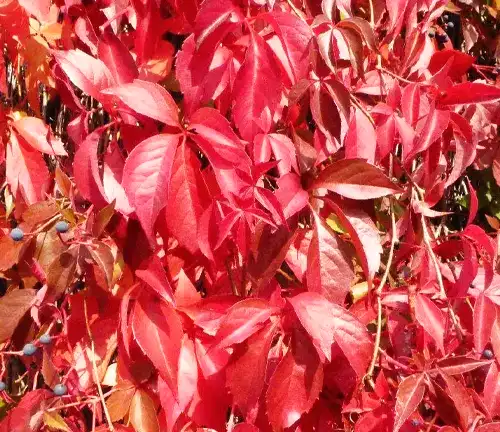
Frequently Asked Questions (FAQs)
- What is Virginia Creeper?
Virginia Creeper (Parthenocissus quinquefolia) is a native North American vine known for its beautiful foliage and climbing habit. - Is Virginia Creeper the same as poison ivy?
No, they are different plants. While they share a similar leaflet structure, Virginia Creeper is harmless to touch, while poison ivy can cause skin irritation. - How do I identify Virginia Creeper?
Virginia Creeper has compound leaves with five serrated leaflets, and it’s known for its vibrant crimson, orange, or purple fall foliage. - Where is Virginia Creeper native to?
Virginia Creeper is native to eastern and central regions of the United States. - Can I grow Virginia Creeper in my garden?
Yes, Virginia Creeper is a popular choice for landscaping and can be grown in gardens. It’s relatively easy to cultivate and can thrive in various soil and light conditions. - How fast does Virginia Creeper grow?
Virginia Creeper is a fast-growing vine and can cover large areas quickly, so it may require regular pruning to keep it in check. - Does Virginia Creeper have any ecological significance?
Yes, it provides food and habitat for wildlife, particularly birds that feed on its berries. It contributes to biodiversity and helps support local ecosystems. - Is Virginia Creeper toxic or harmful to humans or pets?
Virginia Creeper is non-toxic to humans and pets, and it’s safe to have in your garden. - Can Virginia Creeper be used for soil stabilization?
Yes, its vigorous growth and root system can help prevent soil erosion, making it useful for landscaping on slopes and erosion-prone areas. - What are the common uses of Virginia Creeper?
Virginia Creeper is commonly used to cover fences, walls, trellises, and pergolas, providing a natural and aesthetic screen. It’s also appreciated for the shade it offers during the summer months. - When is the best time to plant Virginia Creeper?
The best time to plant Virginia Creeper is in the spring or early fall, ensuring that it has time to establish its roots before extreme weather conditions. - How do I care for Virginia Creeper?
Virginia Creeper requires minimal maintenance once established. Regular pruning to manage its growth and occasional watering during dry spells are typically all it needs.



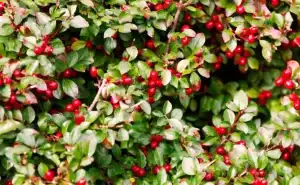
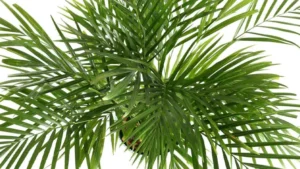

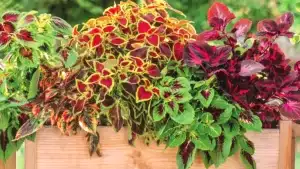

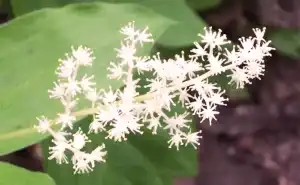
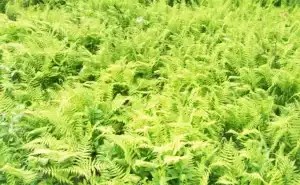
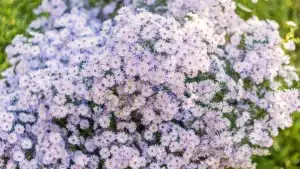
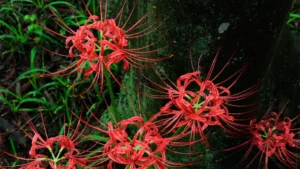
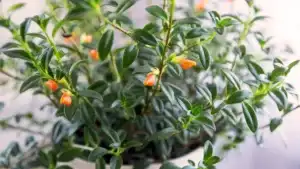

Leave your comment